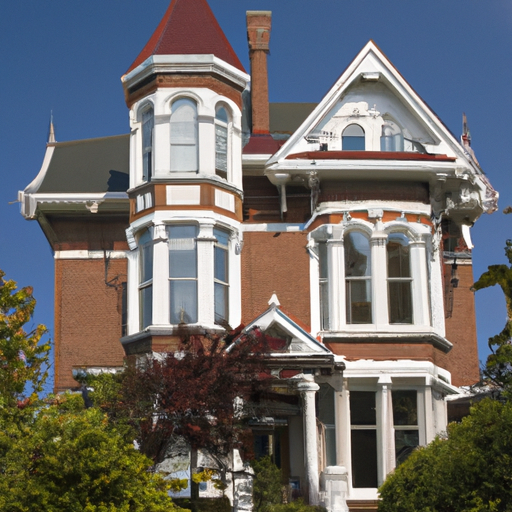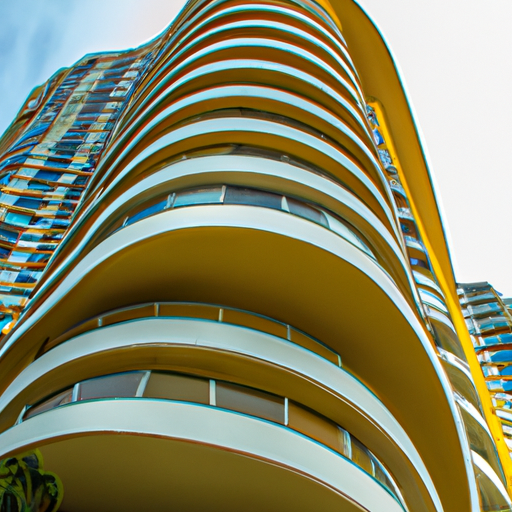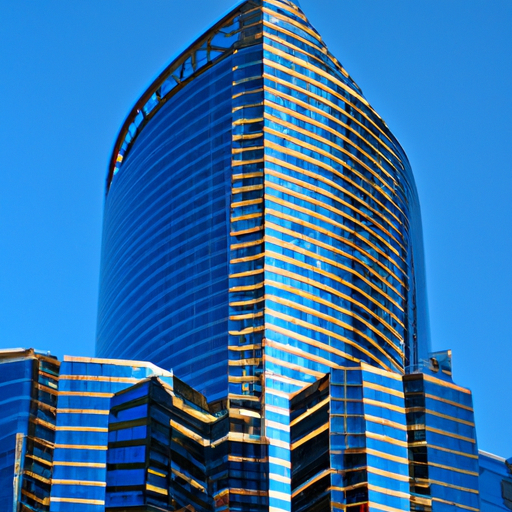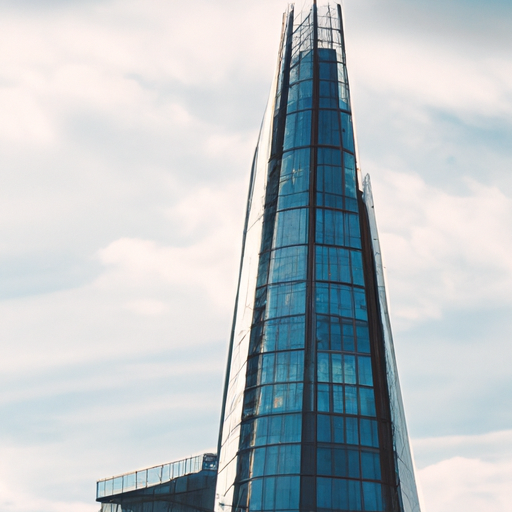
The Capitol Building and the History of Austin’s Architecture
When it comes to iconic buildings in Austin, the Texas State Capitol Building is number one on the list. Located in downtown Austin, the Capitol Building is an iconic symbol of Texas and its history. The building was designed by architect Elijah E. Myers in 1881 and is made of pink Texas granite. It stands at a lofty 302 feet and is the largest state capitol building in the U.S. Its distinctive dome, made of iron and copper, is an impressive sight to behold and is visible from many parts of the city.
The Capitol Building has a long and rich history. It was the site of the Texas secession from the Union in 1861 and the first reading of the Emancipation Proclamation in Texas in 1865. It was also the site of the first Texas legislative session in 1883. The building has served as the seat of Texas politics ever since and is a symbol of Texas pride.
The history of Austin’s architecture is closely intertwined with the Capitol Building. The building was part of the Capitol Complex project, a sprawling complex of government buildings that was built in the late 19th and early 20th centuries. The Capitol Complex project included the Governor’s Mansion, the Supreme Court Building, and the University of Texas Tower. Each of these buildings is an iconic symbol of Austin’s rich and unique history.
The Capitol Building and the Capitol Complex project are just a few examples of the great architectural feats that have been achieved in Austin. Throughout the city, you can find buildings in many different styles, from Greek revival to modern. Austin is home to a diverse range of architectural styles, from historic homes to modern skyscrapers.
The Capitol Building and the rest of the Capitol Complex project have shaped the landscape of Austin’s architecture for more than a century. It is a symbol of Texas pride and a reminder of the city’s rich and vibrant history. Whether you’re visiting for the first time or are a longtime resident, it’s worth taking the time to appreciate these iconic buildings and the unique architecture of Austin.

Exploring the Architecture and Design of Austin’s Buildings
Exploring the architecture and design of Austin’s buildings is one of the most delightful experiences the city has to offer. Austin is a vibrant and diverse city, and this is evident in its architecture. From historic homes to modern high-rises, Austin’s buildings are as varied as the people who inhabit them. There’s something for everyone in this eclectic city.
The Texas State Capitol is one of the most iconic buildings in Austin. Built in the 1880s, the Capitol stands proudly at the north end of the city’s downtown. Its grand dome and four main wings are an impressive sight to behold. The Capitol is surrounded by lush green lawns and a variety of monuments, making it a popular destination for locals and visitors alike.
Austin is also home to some stunning modern architecture. The Frost Bank Tower stands out among the city’s skyline as one of the tallest buildings in the state. With its sleek glass exterior, it stands as a testament to the city’s growth and prosperity. The nearby Brazos Place is also worth a visit. This distinctively curved high-rise is a stunning example of modern design, with its bright colors and unique architectural features.
Just outside of downtown, visitors will find some of Austin’s most iconic historic homes. The Susanna Dickinson House, built in the 1850s, is a classic example of the city’s distinctive style. The house is filled with intricate details and charming period features, making it a favorite among visitors and locals alike. Another notable historic home is the Edward S. Miller House, an impressive Victorian-style home built in the late 19th century.
The city of Austin is also home to some amazing public art. The Congress Avenue Bridge is home to the world-famous Austin Bat Colony, with millions of Mexican free-tailed bats living and flying under its arches. The bridge is also a popular spot to watch the sunset and take in the stunning views of the city. The “Hi, How Are You?” mural near the University of Texas is another popular attraction. Painted by artist Daniel Johnston, this colorful mural is a reminder of the city’s vibrant creativity.
From historic homes to modern skyscrapers, Austin’s architecture is as diverse and unique as its people. Whether you’re looking for a historic landmark or a contemporary masterpiece, Austin has something for everyone. With so much to explore, you’re sure to be inspired and amazed by the city’s architecture.

Discovering the Landmarks of Austin’s Iconic Buildings
Austin, Texas is known for its vibrant culture, delicious cuisine, and of course, its iconic architecture. From the UT Tower to the State Capitol, Austin boasts some of the most iconic buildings in the entire country. While it may be hard to narrow down the list of these buildings, it is possible to discover the landmarks of Austin’s iconic buildings.
The University of Texas at Austin is home to some of the most iconic buildings in Austin. The UT Tower is an impressive 307-foot structure that serves as a symbol of the university. The tower is part of the UT Main Building and is open to the public for viewing the city’s skyline. Another iconic building on the campus is the Harry Ransom Center, which houses a variety of collections related to literature, culture, and art.
The State Capitol is another iconic building in Austin. This building is home to the Texas Legislature and is a popular tourist attraction. The building has an impressive rotunda, with a Texas star at the top, which can be seen from miles away. It also has some of the most beautiful stained-glass windows in the city.
The Driskill Hotel is another iconic building in Austin. This hotel was built in 1886 and is known for its elegant Victorian style. The hotel is also home to the Driskill Grill, a popular restaurant that has been serving up some of the city’s finest cuisine for over 130 years.
The Long Center for the Performing Arts is one of the most iconic buildings in Austin. This building is a multi-purpose venue that hosts events such as plays, concerts, and conferences. The building is also home to the Austin Symphony Orchestra, which performs regularly at the Long Center.
The Zilker Park is another iconic building in Austin. This park is located in the heart of the city and is home to a variety of attractions, such as the Umlauf Sculpture Garden, Austin Nature and Science Center, and the Zilker Botanical Garden. The park is also a popular spot for outdoor activities, such as running, biking, and swimming.
The Paramount Theatre is another iconic building in Austin. This theatre was built in 1915 and has been a popular destination for live performances, such as plays, concerts, and movies. The theatre is also home to the Austin Film Society, which hosts a variety of film screenings and events.
These are just a few of the most iconic buildings in Austin. Each of these buildings has its own unique history and charm, and is a reminder of the city’s rich culture and history. Whether you are visiting Austin for the first time or are a long-time resident, discovering the landmarks of Austin’s iconic buildings is an essential part of understanding the city.

The Role of Preservation in Austin’s Architectural Landscape
The city of Austin has long been known for its vibrant culture and vibrant architectural landscape. In recent years, the city has become increasingly aware of the importance of preserving its architectural heritage. It is essential to the city’s identity and its future development. Austin is home to some of the most iconic buildings in the country, with a long history of architectural treasures.
The preservation of Austin’s architectural landscape has been a priority for the city for many years. In the 1930s, the Austin Historic District Commission was established to protect and restore historic buildings in the city. The commission has since grown to include more than 200 buildings and is responsible for the preservation of numerous iconic landmarks. For example, the Austin City Hall, the Paramount Theater, and the Texas State Capitol are all protected by the Historic District Commission.
In addition to the Historic District Commission, the city has taken several other steps to preserve its architectural landscape. In 2006, the city created the Historic Landmarks Preservation Commission, which focuses on the preservation of historic buildings and sites. The commission works to protect the city’s heritage and promote awareness of its history and culture. The commission also has the authority to designate a building or site as a historic landmark, which allows for additional protection and preservation measures.
Austin’s architectural landscape has also been greatly impacted by the city’s development of green spaces. The city has established several parks and greenbelts, which have helped to preserve the city’s unique historical character. The city has also implemented several green initiatives, such as the Green Building Initiative, which focuses on helping to reduce energy consumption and improve air quality.
The preservation of Austin’s architectural landscape is essential to the city’s identity and its future development. By preserving its iconic buildings, green spaces, and historic landmarks, the city can continue to foster a vibrant and creative culture. It is essential to the city’s identity and its future development. Preservation is key to protecting the city’s unique architectural landscape and ensuring that future generations can experience and appreciate its beauty and history.

The Wonders of Austin’s Outdoor Spaces and Gardens
The outdoor spaces and gardens of Austin, Texas, are some of the most beloved attractions in the city. From the sprawling and ever-changing Lady Bird Lake to the peaceful and scenic Zilker Park, Austin’s outdoor spaces offer a unique mix of natural beauty and urban vibrancy that can’t be found anywhere else. Whether you’re looking for a peaceful spot to relax and reflect or a vibrant spot to soak up the city’s energy, Austin’s outdoor spaces and gardens are sure to offer just what you need.
One of the most iconic outdoor spaces in Austin is the Ann and Roy Butler Hike-and-Bike Trail. Stretching over 10 miles and following the shore of Lady Bird Lake, this trail offers breathtaking views of the lake, city skyline, and nearby hills. It’s popular among joggers and cyclists, but its wide paved path also makes it a great spot for leisurely strolls. If you’d rather stay closer to the city center, the Shoal Creek Trail is a great option. This scenic trail follows the creek through the city, connecting downtown to the Lady Bird Lake Hike-and-Bike Trail.
The Zilker Botanical Garden is another must-see Austin outdoor space. This 30-acre garden is home to a variety of beautiful flowers, trees, and shrubs. The garden also features a number of unique features, such as an amphitheater, a rose garden, a waterfall, and a butterfly garden. There are even a few sculptures scattered throughout the garden, adding an extra layer of beauty and artistry.
If you’re looking for a more laid-back outdoor experience, the Barton Creek Greenbelt is a great option. This 7.9-mile-long greenbelt is home to a variety of trails, creeks, and swimming holes. It’s the perfect spot to explore nature while still staying close to the city. There are even several popular swimming spots, such as Twin Falls and Sculpture Falls, that are great for cooling off on hot days.
Finally, no trip to Austin would be complete without visiting the Umlauf Sculpture Garden and Museum. This outdoor art museum is home to over 140 sculptures by the renowned sculptor Charles Umlauf, as well as a variety of other artworks. The garden is a beautiful and peaceful spot to appreciate art in a natural setting.
Overall, Austin’s outdoor spaces and gardens are some of the city’s most beloved attractions. From peaceful trails and gardens to vibrant greenbelts and sculpture gardens, Austin’s outdoor spaces offer something for everyone. Whether you’re looking for a peaceful spot to relax or a vibrant spot to explore, Austin’s outdoor spaces are sure to satisfy.

The Austin Skyline: A Closer Look at the City’s Most Iconic Buildings
The Austin skyline is one of the most iconic features of the city and a symbol of its rich history, growth, and culture. From the state capitol building to the University of Texas tower, the skyline is full of recognizable buildings that represent the city’s diverse architecture. Below, we will take a closer look at some of the most iconic buildings in Austin and what makes them stand out from the rest.
The Texas State Capitol building is perhaps the most recognizable structure in the Austin skyline. The building was designed in 1885 and stands at an impressive 308 feet tall. It is made of pink granite and limestone and is considered one of the most impressive capitol buildings in the United States. The building is home to the Texas Legislature and the offices of the governor, lieutenant governor, and attorney general.
The University of Texas tower is another iconic structure in the Austin skyline. The tower stands at 307 feet tall and is located on the University of Texas campus. The tower was built in 1937 and was designed to be a symbol of the university’s academic achievement. It is illuminated with the university’s burnt orange and white colors at night, making it a true symbol of the city.
The Frost Bank Tower is another prominent feature in the Austin skyline. The building stands at 515 feet tall and is the tallest building in Austin. The tower was designed in 2004 and is considered one of the most modern buildings in the city. The building is home to offices, retail outlets, and a restaurant, making it one of the most popular buildings in the city.
The Austonian is another impressive structure in the Austin skyline. The building stands at 683 feet tall and is the tallest residential building in the city. The building was designed in 2008 and is home to luxury condominiums, making it one of the most sought-after addresses in the city. The building also offers stunning views of the city skyline and is a popular destination for visitors.
The Paramount Theater is another iconic building in the Austin skyline. The theater was built in 1915 and is a historic landmark in the city. The theater is home to some of the best live performances in the city and is a popular destination for locals and visitors alike. The building is an example of classic architecture and is a must-see for anyone visiting the city.
The Driskill Hotel is another important building in the Austin skyline. The hotel was built in 1886 and is one of the oldest and most luxurious hotels in the city. The building is an example of classic Victorian architecture and is a popular destination for visitors who are looking for a unique experience. The hotel is also home to some of the best restaurants and bars in the city, making it a popular destination for locals and visitors alike.
The Austin skyline is full of iconic buildings that represent the city’s diverse and unique architecture. From the state capitol building to the University of Texas tower, these buildings are symbols of the city’s growth, history, and culture. The buildings are all unique in their own way and offer visitors a glimpse into the city’s past and present.

The Different Architectural Styles of Austin’s Buildings
Austin is known for its unique and diverse architecture. From the stately halls of the Texas State Capitol to the art deco style of the Austin Motel, Austin has a wide variety of architectural styles that make it one of the most interesting cities to explore. Each of these styles reflects the city’s growth and development throughout history.
One of the earliest styles of architecture found in Austin is Spanish Colonial Revival. This style, which dates back to the late nineteenth century, can be found on the University of Texas campus and in downtown Austin. In addition to its red roofs, white stucco walls, and other Spanish-inspired details, this style of architecture often features arched windows, bell towers, and wrought iron balconies.
Another popular style of architecture in Austin is Mediterranean Revival. This style, which became popular in the early twentieth century, can be seen in buildings such as the Paramount Theatre and the Driskill Hotel. Mediterranean Revival buildings typically feature symmetrical facades, terracotta roofs, and arched windows and doorways.
The Art Deco style of architecture is also found in Austin. This style, which became popular in the 1920s and 1930s, can be seen in buildings such as the Austin Motel and the Driskill Grill. Art Deco buildings typically feature curved lines, stepped facades, and ornamental details such as zigzag patterns, sunbursts, and geometric shapes.
The International Style of architecture is also found in Austin. This style, which became popular in the mid-twentieth century, can be seen in buildings such as the Austin City Hall and the Frost Bank Tower. International Style buildings typically feature flat roofs, glass walls, and minimalist details.
Finally, the Modernist style of architecture is also found in Austin. This style, which became popular in the late twentieth century, can be seen in buildings such as the Austin Convention Center and the Austin Music Hall. Modernist buildings typically feature curved lines, open facades, and large glass walls.
Austin is home to a wide variety of architectural styles that make it one of the most unique cities in the country. From Spanish Colonial Revival to Modernist, each of these styles reflects the city’s growth and development throughout history. Whether you’re looking for a place to take a stroll or to explore the city’s architectural gems, Austin is the perfect place to do so.

The Influence of Technology on Austin’s Architecture
Austin, Texas is known for its vibrant culture and its cutting-edge technology. The city is home to some of the most innovative technology companies in the world, and this has had a significant influence on the city’s architecture. From sleek, modern office buildings to avant-garde residential structures, Austin’s architecture is as forward-thinking as its residents.
The city’s most iconic buildings are a testament to the influence of technology on Austin’s architecture. The Austonian, the tallest building in the city, is a stunning example of modern design. Its sleek, glassy exterior reflects the cutting-edge tech companies that call the city home. The building was designed to maximize natural light and reduce energy consumption, using the latest green technology.
The Frost Bank Tower is another iconic Austin building, with its distinctive, futuristic design. It is an example of how technology can be used to create a beautiful and sustainable design. The building is powered by an on-site solar array, making it one of the first buildings in the city to use renewable energy.
The Long Center for the Performing Arts is an iconic Austin landmark, and it too shows the influence of technology on the city’s architecture. The building is designed with the latest in green building materials, including recycled glass and steel. It also features energy-efficient lighting and an energy-efficient air conditioning system.
The W Hotel and Residences is another example of how technology has shaped Austin’s architecture. This iconic building is designed to maximize natural light and reduce energy consumption, thanks to its reflective glass exterior. The building also features an on-site solar array, making it one of the most energy-efficient buildings in the city.
The University of Texas Tower is an iconic Austin landmark, and it too has been shaped by technology. The tower is constructed with a unique blend of recycled steel and glass, and the building is designed to maximize natural light. The building also features energy-efficient lighting, air conditioning, and plumbing systems.
Finally, the Austin Convention Center is one of the city’s most iconic buildings, and it too has been shaped by technology. The building is designed to maximize natural light, reduce energy consumption, and provide a comfortable, productive environment for business meetings and events. The building’s design also features energy-efficient lighting and air conditioning.
Overall, technology has had a major influence on Austin’s architecture. From sleek, modern office buildings to avant-garde residential structures, Austin’s iconic buildings show the power of technology to create beautiful, sustainable designs. Whether you are looking for an iconic building to visit or a new home to live in, Austin’s architecture is sure to impress.



